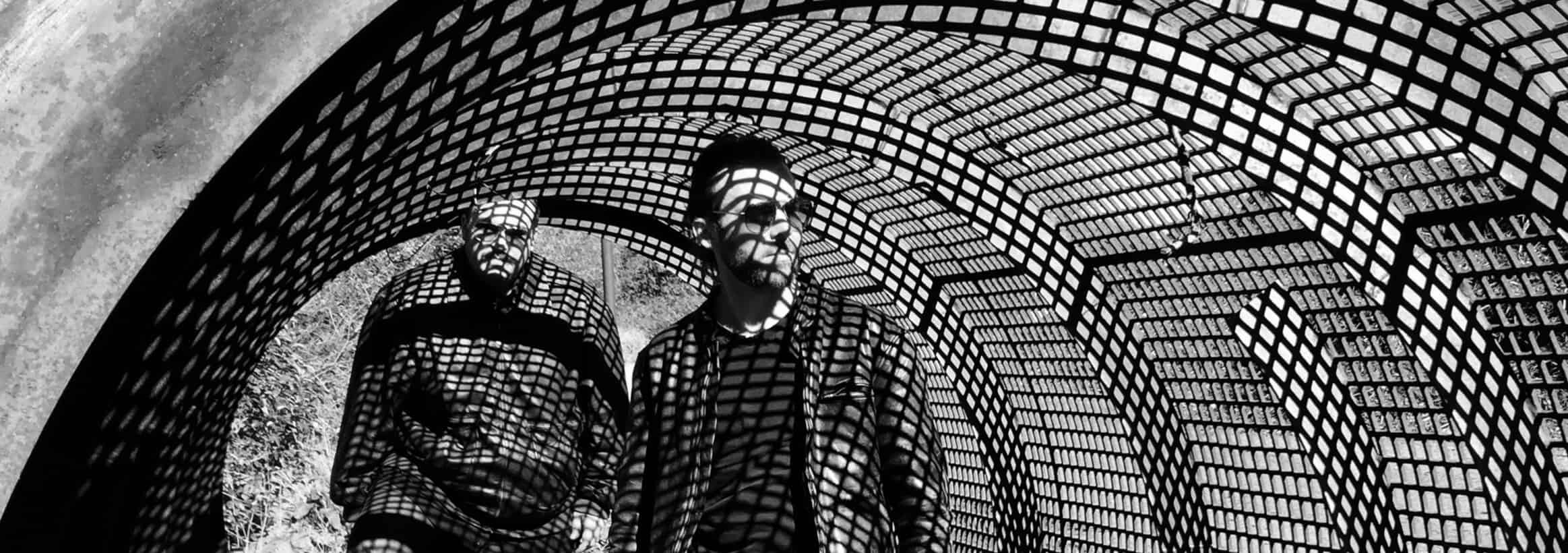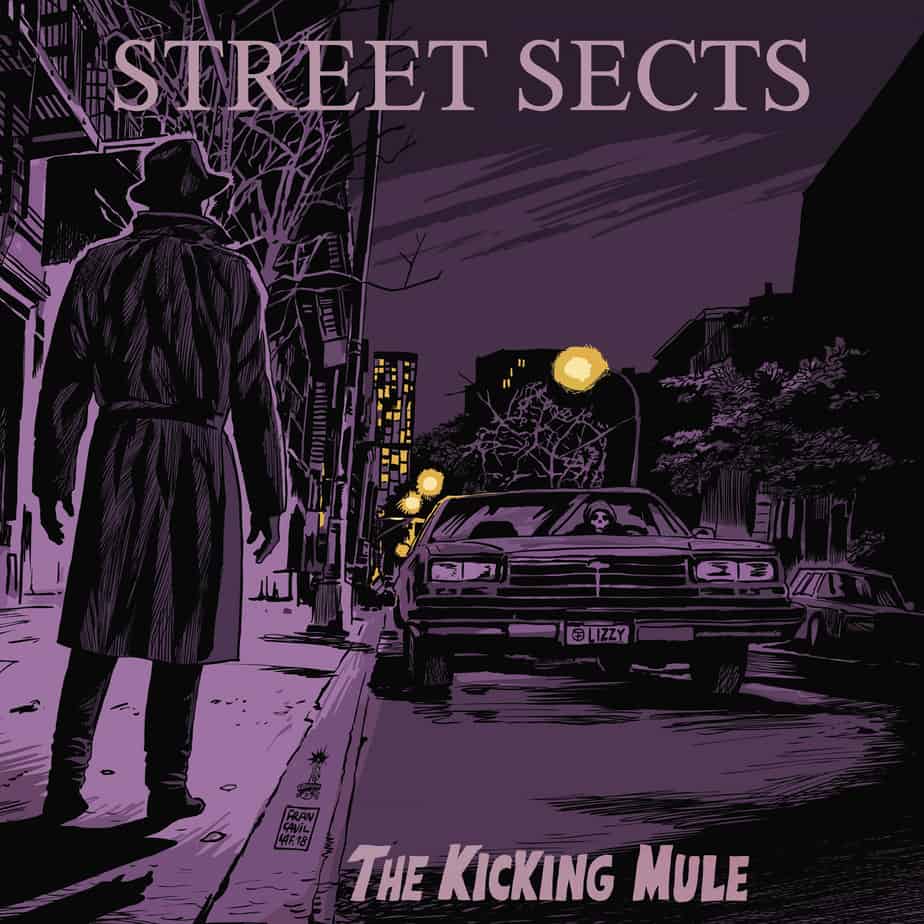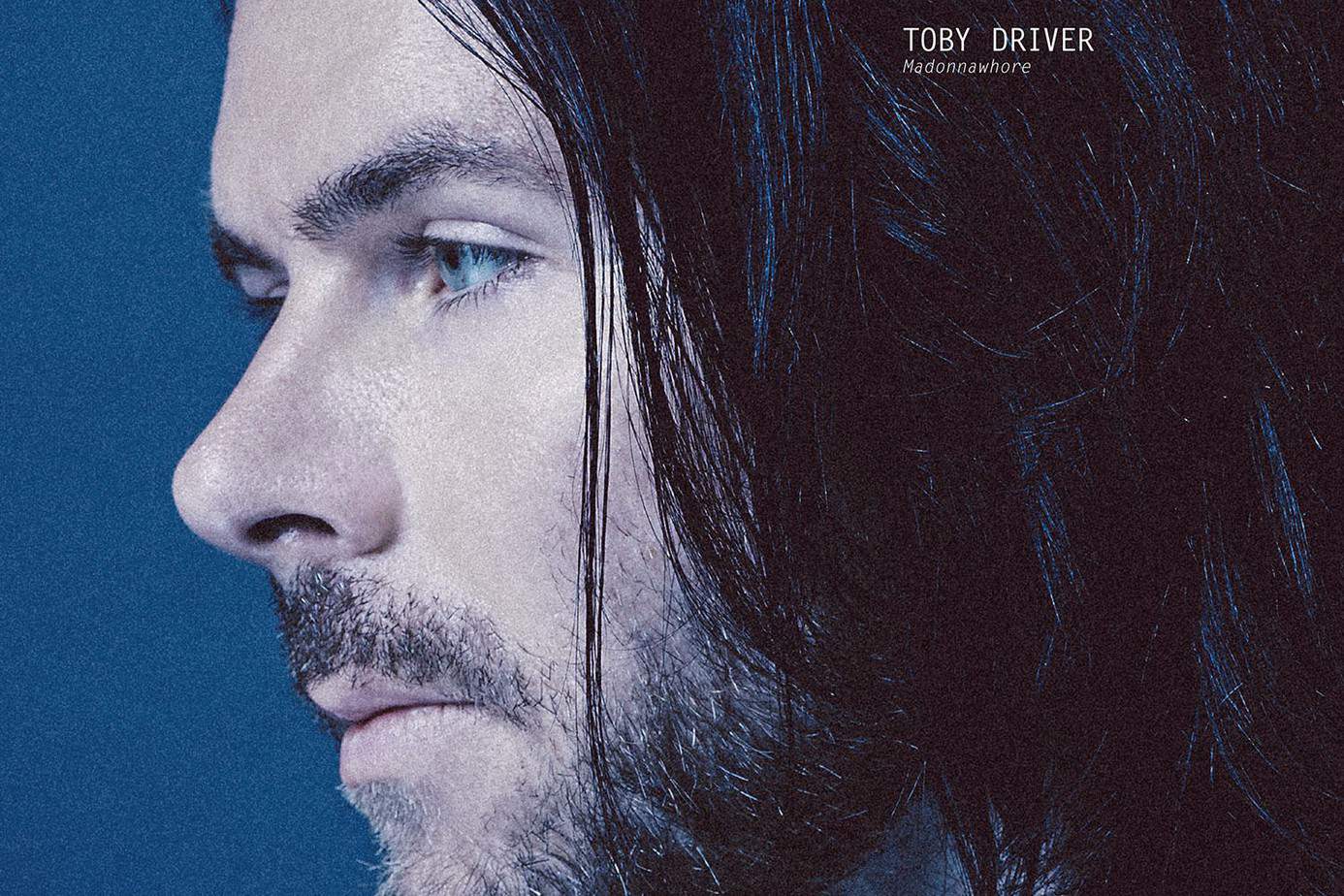
Album Review: KAYO DOT – PLASTIC HOUSE ON BASE OF SKY
The first time I ever heard Kayo Dot was in 2008. I was at Vintage Vinyl, doing my habitual scanning of their endcap offerings, handpicked by the staff. The striking cover of the digipak caught my eye immediately, as did the yellow, hand-written note beneath it: “New project from Toby Driver, the mastermind of Maudlin Of The Well.” While I’d never heard Maudlin of the Well directly, I had seen the band mentioned repeatedly at Traversing, a fansite for my favorite band Dredg. Maudlin of the Well was noted for their incredibly rich concept albums, packed with enigmatic lyrics and equally mysterious musical journeys but actually getting a copy of one of their albums, even online, was an arduous process. Kayo Dot’s second album, however, was the first to be released on Hydra Head Records, home of the legendary post-metal group ISIS and headed by its prolific frontman Aaron Turner, so it wasn’t so surprising to see it at Vintage Vinyl, who carried just about anything Hydra Head put out in those years. But what really rocked my world as that this was a used CD, discounted to a measly $8! To this day, I suspect some wise guru had bought it, ripped it and promptly return the used CD of Blue Lambency Downward for the next adventurous listener to scoop up, which I promptly did.
Unfortunately, my first experience with Kayo Dot was akin to seeing a photo of a person’s genitalia for the first time. You just don’t grasp the concept of it right away. It’s disconnected from what you know it is. There’s a vague hint there that you might be interested in this thing but you’ll need to experiment a bit and maybe grow up some before you really grok it. So the CD went into my CD rack and collected dust, the name Kayo Dot forgotten to me until 2011 when St Louis native and filmmaker James Gun came back to premiere his new black comedy superhero satire Super in his hometown, at the same theatre (The Tivoli) where his previous cult hit Slither had screened at a midnight show the year before, garnering my attention. Not only was I excited to see James Gunn premiere his new film but I also hoped that his girlfriend at the time, Mia Matsumiya, would also be accompanying him. You see, she was the violinist for Kayo Dot. She was also one of the funniest, real and inspiring people on Twitter, someone who really had an influence on me back then, pre-2010. When she confirmed that she would be coming to St Louis, I delved back into Kayo Dot and discovered they had released a new album the year before; Coyote, also on Hydra Head. I immediately picked it up from Vintage Vinyl and listened to it, hoping it would prove to be a bit more accessible than Blue Lambency Downward.
My first listen of Coyote was truly shocking. Gone was the hectic, opalescent, fluttering jangle of the band’s previous incarnation. Mia’s strings were no longer ethereal and elegant. Toby’s distinctive bass now lurked where it previously danced. Where percussion had once been a controlled cacophony, it now stalked, wary and lurching. It wasn’t that the energy was gone; instead, the band sounded like a coil pulled taut, a skin stretched thin. It was elegiac at times and even more mysterious than Blue Lambency Downward. This reversed metamorphosis, from a winged being of blinding lights to a hungry, haunted mutant, was absolutely captivating. Toby’s vocals in particular seemed absolutely ghost-like. Coyote, in a matter of a week, catapulted into the position of a favorite album ever. It still is. To this day, I feel sorry for babbling like a madman at her about her performance on the album; her strings cut and strangled the songs, sharp corners and serrated edges that briefly descended into mad fits of beautiful passion.
I kept up with Kayo Dot as closely as I could after that seemingly unearthly encounter, of course, but as with the years preceding Kayo Dot’s first album, there would be another shift in personnel and Mia would be barely present on Coyote‘s follow up, the startlingly diverse Gamma Knife. It almost seemed like this album was Toby’s middle finger to fans with any expectations of how the band should sound at that point. Some songs were chanting drones, others felt like Kayo Dot the black metal band. It was a revisit of Maudlin of the Well, I discovered, and quite different from Coyote, as much as that album was from Blue Lambency Downward. This band, I learned, would always sound significantly different from album to album. At first I resented this. But there was something about the gothic mood of Gamma Knife I couldn’t look away from.
True to that promise, Kayo Dot has changed consistently on every release since then. after Gamma Knife came the epic Hubardo, where they truly embraced the metal sounds dabbled in on Gamma Knife, adding a more orthodox percussion style as well as more of the kind of guitar playing found in their Hydra Head label mates ISIS. This was not a change I was prepared to accept. Kayo Dot was not a metal band, to my mind. I resented that what I had once perceived as sitting outside easily definable genre categories now could be pretty accurately slotted into the realm of avant garde metal. This was, in hindsight, very unfair and I regret never giving Hubardo a chance to grow on me.
When Hubardo‘s successor, Coffins On Io, exploded fully formed from a label I was already quite familiar with (The Flenser), I was very surprised. I was even more surprised when I listened it. The strings were completely gone, as were the elements of extreme metal. Where Hubardo had seemed like an inevitable destination predicted by Gamma Knife, Coffins On Io didn’t even sound like the same band at all. It was dominated by synths, which Toby had barely utilized on past records. Toby’s voice now had a very gothic, elegant tone. Again, I immediately bristled at the very post-punk-ness of it. Why did Toby not return, I wondered, to the truly avant garde amorphousness of Coyote and Blue Lambency Downward? It wasn’t until Thom Wasluck (better known as Planning For Burial), a fellow member of The Flenser’s musical family, raved about the album that I gave it a second chance and realized that this was post-punk subverted. As much as Toby leaned on the expectations of the post punk sound for Coffins On Io, he mangled it as well, regularly using his voice as a beautiful weapon. This was when I resolved to no longer judge Toby’s work in the context of what came before. That didn’t serve any purpose other than to put up a barrier between me and the music.
So it is with their newest album, Plastic House On Base Of Sky (or PHOBOS for short). Unsurprisingly, Kayo Dot has evolved rapidly once more, mostly abandoning the organic drums of Coffins On Io in favor of programmed drums and delving nearly completely into synthesized sounds, hiding a panoply of organic instruments between and besides. My first reaction was desperation; again, I had to acclimate myself to a new iteration of Kayo Dot? But thankfully, Coffins On Io had prepared me for this. And opening track “Amalia’s Theme” helped quite a bit in that respect by launching into one of Toby’s catchiest, most accessible tracks he’s ever done under the Kayo Dot alias. “Amalia’s Theme” is titled very appropriately; it’s a coda for the whole of PHOBOS, which seems to be about the girl depicted in the cover art of the album, and balances this new, almost feverishly opulent mood with the deep, inviting layers of textures that let you know you’re listening to a Kayo Dot album.
But the old form of Kayo Dot isn’t gone completely; the central piece of the album, “All The Pain In All The Wide World” marks the return of Toby’s distinctive, expressive bass and a dazzlingly labyrinthine structure that coils and uncoils throughout a ten minute runtime. It’s a song that absolutely requires repeat meditations but, like most of Kayo Dot’s lengthier works, rewards intense study. It’s the only song to do so, with everything following it presenting more transparent, navigable forms, laced with much brighter synth pools and vocal melodies, especially closer “Brittle Urchin,” which delicately melts into an ambient haze until a spiraling cycle of drums emerges, bearing Toby’s detached vocals out and away into pure, abrupt nothing.
PHOBOS is not grand in the same sense as Hubardo or Coffins On Io. It almost feels like Toby making a pop album. But, like he did with black metal and post punk before it, he’s ultimately subverting the crystalline preciousness of it, mutating it into a viral thing. The intimidating second track is a bit of a stumble and might have been better served placed directly in the center of the album but then again, its placement makes it difficult to skip or ignore. My favorite Kayo Dot album is still Coyote of course but I find this one almost as interesting and thrilling as Coffins On Io and certainly more enjoyable to listen to than Blue Lambency Downward or Hubardo. Maybe its steamy, overbearing artifice just clicks with the summertime I’m in the middle of. Either way, Kayo Dot’s new album is good and actually makes me excited for whatever comes next while simultaneously savoring this moment in the continual seismic rupturing of Kayo Dot.


